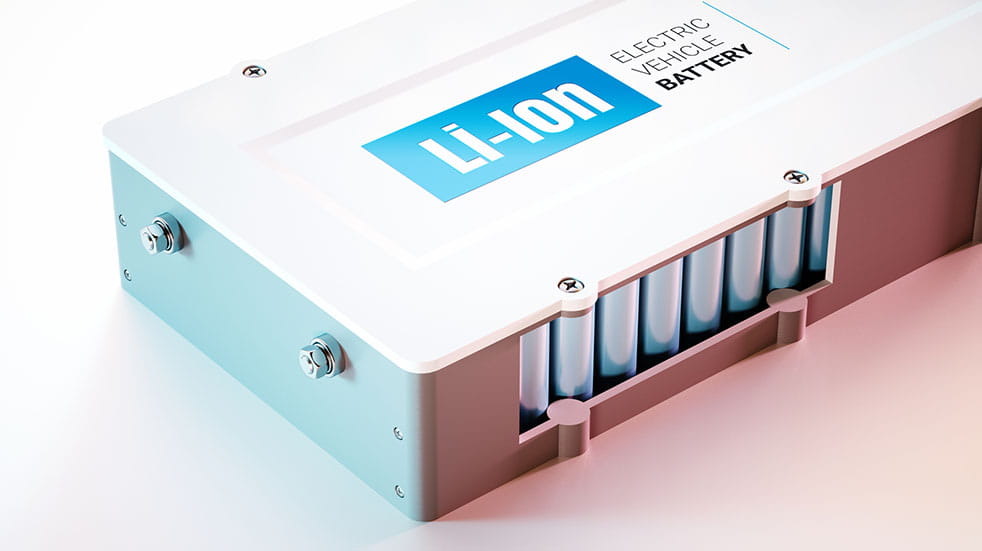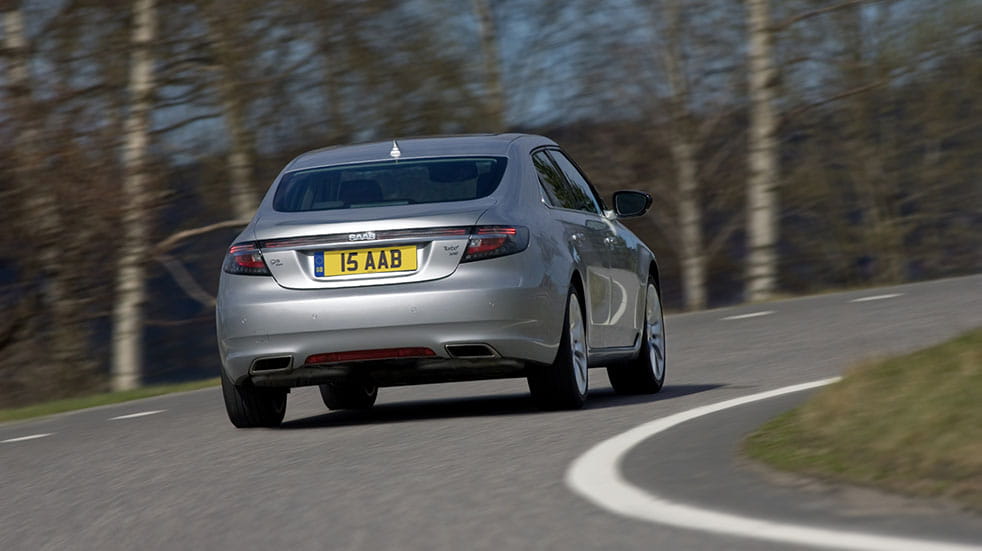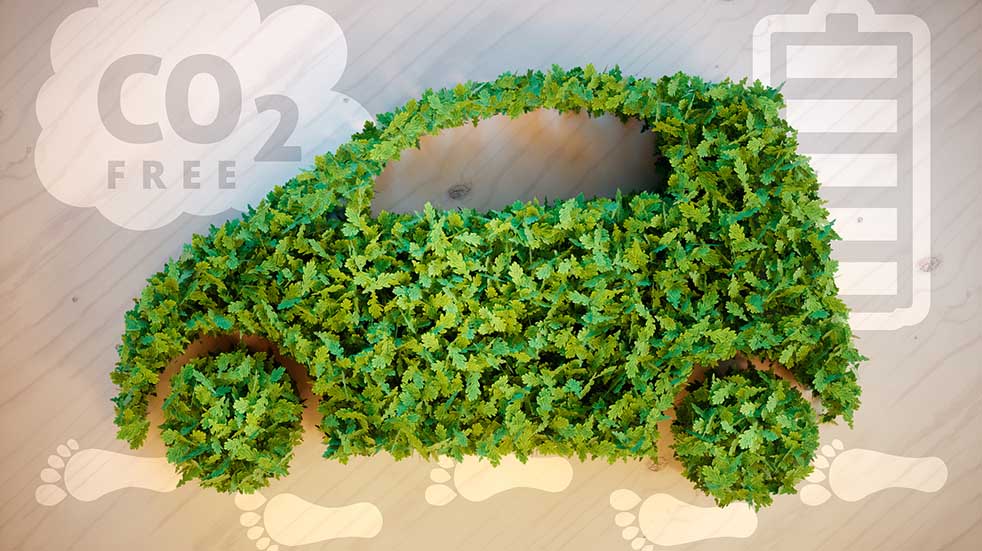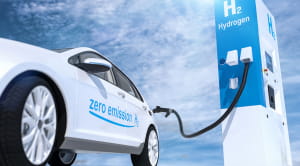
Vicky Parrott, Associate Editor for DrivingElectric, explores whether sticking or twisting is the more eco-friendly option
A Boundless member, Ian Burton, recently asked me for some advice regarding his 19-year-old petrol-engined Saab, and whether it would be more eco-friendly to stick with it or buy a new electric vehicle.
He assumed it was not a major polluter as he did not have to pay the Ultra-Low Emission Zone charge when visiting London, and was also told it would run happily on the proposed E10 fuel.
Ian said that if he scrapped the car, it would generate carbon emissions as components are broken down for recycling where possible or sent to landfill. Additionally, he reasoned that if he were to buy a new car, emissions would be generated from the manufacture of the steel, plastics and other components; from the transportation of components; from the cars of the workers going to the factory, and from the oil and electricity used to run the factory.
What he wanted to know, then, was whether it would be ‘greener’ to keep his car than it would be to buy a new or newer one.
Complex comparisons
The question of whether keeping an old car on the road is greener than buying new has been debated since well before the recent EV revolution. But with battery vehicles now part of the mainstream norm and set to become the only propulsion method available in a new car by 2035, it’s more pertinent than ever.
Sadly, there’s no simple answer as comparisons between electric vehicles and conventional vehicles are complex. Their environmental impact will depend on many factors, including the size of the vehicles, the accuracy of the fuel-economy estimates used, how electricity emissions are calculated, what driving patterns are assumed, the source of the power used in the production of EVs and for charging them, and even the weather in regions where the vehicles are used.
All of these are subject to broad estimates, and the figures used here are, in the main, taken from a 2018 report on the resources, energy and lifecycle greenhouse gas emission aspects of EVs produced for the European Parliament.
New EV versus new ICE

A good place to start is the environmental burden of a new electric car. The battery is inevitably the biggest evil here. According to the European Parliament report, producing a 24kWh lithium-ion battery accounts for around 33–44% of the total 10-tonne greenhouse gas emissions burden of manufacturing an EV. (It’s worth clarifying here that EV emissions are not from the tailpipe, but are indirect emissions resulting from the source of power for the production of the vehicle and for charging it. The European Parliament report bases these on an average European electricity mix.)
Over the course of its entire life, including manufacture, electricity for running – the report assumes a life cycle that includes driving 93,206 miles (150,000km) in Europe, maintenance and end-of-life treatment, it’s estimated that an EV will be responsible for just over 20 tonnes of greenhouse gases.
By comparison, the total life emissions of an equivalent new petrol vehicle doing 59mpg over the same mileage will be 27.5 tonnes. Some 20 tonnes of that total are accounted for in the burning and transport of fossil fuels – by comparison, an electric car in Europe is estimated to ‘emit’ eight tonnes of greenhouse gas emissions over the same distance.
Interestingly, the report also suggests that the amount of greenhouse gases emitted in recycling a car is relatively small; both electric and internal combustion engine (ICE) cars are estimated to account for some 0.5-tonnes of greenhouse gases during the end-of-life process. There is also legislation in place to ensure that at least 95% of a scrap car is recycled – so Ian’s Saab isn’t destined for landfill.
• What does the future hold for diesel-engined road vehicles?
Keep your car or replace it?
On the subject of Ian’s Saab, we’ve ascertained that new EVs are greener than new petrol or diesel cars over an identical life cycle, but what of a healthy, existing car?
In many ways, keeping an old car on the road is, indeed, the greener option. If producing a new EV accounts for some 10 tonnes of greenhouse gases, there’s an instant benefit to simply not making that car.
But where an EV takes more energy than an ICE car to produce, an ICE car uses more energy to run. How much more? Well, using those European Parliament report estimates, the production and burning of petrol in a 58mpg vehicle and the maintenance of that vehicle is responsible for 0.23 tonnes of greenhouse gases per 1,000 miles. This doesn’t take into account the emissions created in production and recycling, since the car already exists, and the recycling emissions burden is very similar for EV and ICE cars.
However, I reckon that the European Parliament report is being generous with its fuel economy estimates, so let’s say that Ian’s car does half that economy, which roughly equates to 0.45 tonnes of emissions per 1,000 miles.
The EEA’s example of a 24kWh battery is also optimistic, since most EVs now have batteries of double that size or more. So let’s use a more realistic 48kWh battery.
This means that Ian would have to do 31,111 miles in a 29.5mpg Saab to produce the same amount of gases (14 tonnes) produced in creating a 48kWh EV. (If you’d like to see these calculations in more detail, they’re set out below.) From that point on, an EV is roughly 75% less emitting currently, and is only going to get greener as energy production becomes cleaner.
• Why fuel-cell vehicles could play a big part in our motoring future
So, is it greener to keep driving the Saab?

Working on that theory, if you do low mileage (as Ian does), then it is a greener choice overall to keep your old car.
But those people using a higher-polluting older car to accrue moderate or higher mileage over the years will be doing the planet – and their local air quality in particular – a favour by swapping to an electric car; especially if they keep that car for the long haul rather than replacing it every few years.
And don’t worry about the battery life because, while the maximum range will drop over the life of the car, modern electric cars have been around for long enough to prove that it’ll only be by roughly 15–20% over 100,000 miles. You are far, far less likely to need a new battery in an EV than you are a new engine or gearbox in an ICE car.
In essence, given the localised air quality benefits of EVs and the fact that they get greener in line with energy production (see more on this below), it won’t be long before the environmental benefits of a new EV will outweigh even the benefits of keeping a healthy older car on the road.
Clearly, I haven’t considered used EVs or newer, cleaner ICE cars here, so I’m not claiming to have covered every base. I’ve simply tackled Ian’s original question with what I believe are the best estimates available. No doubt some will question the report I based my figures on, but you have to put a stake in the ground somewhere...
Energy sources are getting greener
It’s worth noting that the report on which these figures are based was carried out in 2018, and one of the most persuasive aspects of EVs is that they get greener as the energy sources become more renewable. In 2019, for the first time ever in the UK, renewable energy outstripped fossil fuel sources.
For more context, the drop-off in coal use over the last six years has seen the average carbon intensity (a measure of how many CO2 emissions are produced per kWh of electricity consumed, or how clean the energy is) of UK mains electricity fall by some 60%, from around 500g/kWh to 200g/kWh. Which in turn means that running an EV has become cleaner in the same time – and this will continue to improve as electricity becomes cleaner still.
• The WLTP and why it should influence your next car purchase
Battery production
Battery production is also becoming cleaner. The EEA report mentioned earlier points out that, if the Tesla Gigafactory 1 is self-sufficient in the energy it uses to produce batteries as the company proposes, “it may reduce battery cell production impacts by up to 50% compared to cells produced in South Korea, China, and Japan”.
It’s not just Tesla, either. All car manufacturers are invested in improving battery technology while lessening its dependence on hard-to-source metals such as cobalt – it makes financial as well as ecological good sense. Renault-Nissan, for instance, hopes to have cobalt-free, solid-state batteries on the market by 2025.
What about classic cars?
There will, however, always be emotive and cultural reasons for keeping classics on the road. We love them, and that’s not going to change. So, what’s the future for them as the mainstream swaps to plugs?
Sir Greg Knight, Chairman of the All Party Parliamentary Historic Vehicles Group, reckons that there’s little to worry about for now. “The classic movement needs to be vigilant – I’m not saying that there won’t be a group that calls for a total ban on petrol cars," he says. "But the 2035 legislation shouldn’t strike fear into the hearts of classic vehicle owners. We’re looking at a tapering off in demand for petrol and diesel up until 2050, and I expect fuel will be widely available for a good while after that. Even then, nobody is talking about banning petrol and diesel cars.”
In short, even as we witness a pivotal moment in the evolution of the car while we head full tilt towards a plug-in future, those classics that capture the automotive history we’ve already witnessed will only grow in significance.
How were the comparative emissions and efficiency figures calculated?

First, a reiteration of the point that any and all of the figures used can vary – these calculations are based on estimates from one report, selected on its particular merits. This exercise is in no way claiming to be a black-and-white conclusion offering pinpoint accuracy. And with that out of the way, here are the calculations…
When looking at the merits, in environmental terms, of buying a new EV against running an older internal combustion engine (ICE) petrol car, we’re comparing the emissions produced in manufacturing an EV with those of production and combustion of fuel plus maintenance for an ICE, since this car already exists. The recycling emissions burden is very similar for both an EV and an ICE car, so this element is disregarded.
Figures from the European Parliament report assume the life cycle of the vehicles concerned is 150,000km, which is equivalent to 93,206 miles.
The figures also assume that the fuel economy for the petrol car is 4.8l/100km, which is equivalent to 59mpg.
Emissions for EV
From Figure E1, p24, in the European Parliament report: 10 tonnes of greenhouse gases (GHG) are produced in creating a 24kWh EV (4 tonnes in battery production and 6 tonnes for the rest of the car). The EEA’s example of a 24kWh battery is optimistic, since most EVs now have batteries of double that size or more, so those emissions have been doubled, assuming a battery size of 48kWh.
And if we double the estimated emissions created when producing a lithium-ion battery from 4 tonnes to 8, that takes the total greenhouse gases released when producing an EV up to 14 tonnes (8 tonnes in battery production plus 6 tonnes for the rest of the car).
Emissions for ICE car
From Figure E1, p24, in the European Parliament report: 21 tonnes GHG produced in burning and production of petrol and maintenance of petrol car.
To get emissions/1,000 miles, we divided 21 tonnes (ie 21,000kg) by 93,206 miles: that’s 0.225 tonnes per 1,000 miles.
However, we reckon that the report is being generous with its fuel economy estimates at 59mpg, so have assumed that Ian’s car does half that economy, or 0.45 tonnes per 1,000 miles.
To work out how many miles an older petrol car would have to do to create the same amount of emissions as that produced in manufacturing an EV, we divided 14,000 by 0.45 which gives us 31,111 miles.
Running efficiency
From the same report, the maintenance and fuel production for an EV emits roughly 9.5 tonnes of greenhouse gas emissions over its lifetime.
Using figures from Figure E1, p24, in the European Parliament report, an ICE with fuel efficiency of 59mpg emits about 21 tonnes greenhouse gas emissions including maintenance and fuel production (not recycling or vehicle production). So, an ICE with fuel efficiency of 29.5mpg creates a total of 41 tonnes (doubling the 20 tonnes emissions for fuel burning and production, but not the emissions for maintenance).
As 9.5 tonnes (EV) is 23.1% of 41 tonnes (ICE), this makes an EV 77% less ‘emitting’ than a 29mpg ICE car on a mile-per-mile basis, or 77% more efficient in terms of emissions. We rounded that down to 75%.
Counting the cost: emissions in numbers
10 tonnes – the greenhouse gas burden associated with producing a 24kWh electric car, according to a report for the European Environment Agency – four tonnes of this is the battery alone.
20 tonnes – the lifetime greenhouse gases associated with producing, running and recycling a 24kWh electric car in Europe, as opposed to 27.5 tonnes for a petrol car doing 59mpg, and 26 tonnes for a diesel doing 74mpg.
31,111 – the number of miles that an existing petrol car doing 29.5mpg will do before it’s produced as much greenhouse gas by burning fuel as a 48kWh EV does being manufactured.
48.5% – how much of the UK’s electricity came from renewable fuels, primarily wind power, in 2019. 43% came from fossil fuels, and the rest from biomass such as wood pellets.
£200,000 – how much Aston Martin estimates it’ll cost, before VAT, for its reversible electric DB5 conversion. For that, they’ll even make a coffee table of the original 4.0-litre engine for you to use, until you want it back in the car. However, it’s possible to convert most older cars for much less – from around £20,000 for a professional job.





